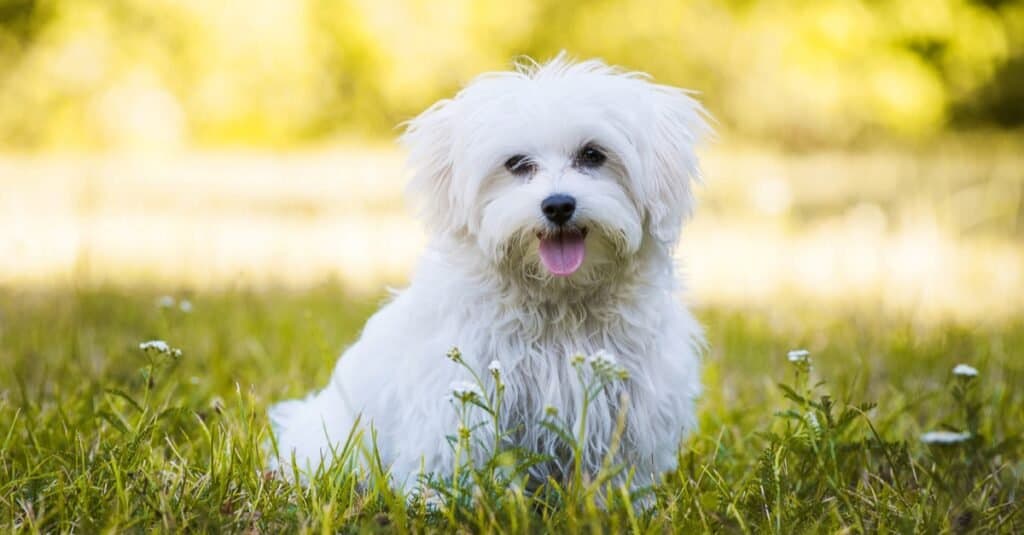Despite being the same species, not all dogs are created equal. Some are better for certain tasks and lifestyles than others. They’re also unique regarding appearances — including their fur texture. However, do dogs have hair or fur?
We will answer this question and more below. Ready to learn more about canine coat types? Keep reading!
What Is the Difference Between Hair and Fur?
When it comes to deciding whether dogs have hair or fur, it’s important to know what hair and fur are. Surprisingly, hair and fur are actually the same thing! The only main difference is word usage.
When you’re talking about humans, it’s more common to use the word “hair.” After all, it might sound a bit strange to tell your friends that you got a fur cut! This is because “fur” is typically used when talking about animals.
However, when we break it down to a chemical and structural level, hair and fur are identical. The distinction arises when we consider aspects like usage and texture.
Fur, for instance, is typically known as being made up of two different layers. One of these is a layer more similar to the hair that humans have. The second layer is thicker and coarser, and it’s used for protection from the elements.

Hair and fur are the same, but fur is typically used when discussing animals.
©Dora Zett/Shutterstock.com
Do Dogs Have Fur?
Overall, it’s safe to say that dogs have fur. While on a linguistic level, you could say they have hair, most dogs align with fur. This is because they have a double coat with two different fur textures.
For dogs, the first layer of fur is known as the undercoat. This fur is soft and fluffy, and it’s used to help protect your dog from cold weather. The second layer of fur is the layer that you see. Some dogs have long, straight fur, while others may have a coarser texture.
Whiskers come from hair follicles, just like the undercoat and the outer coat of fur. They aren’t considered fur, though, because they have a different structure.
Because the main difference between fur and hair, outside of word usage, is texture, some dogs have hair!

Dogs have a double coat that features two different textures of fur.
©Dorottya Mathe/Shutterstock.com
What Types of Dogs Have Hair?
Although fur and hair are seen as the same, some dogs are more associated with hair rather than fur. This has to do with maintenance and grooming, texture, and appearance. Some of the most notable dogs with hair include the Bichon Frise, Maltese, Yorkshire terrier, miniature schnauzer, Shih Tzu, and Havanese.
There are also some breeds of dogs that are both furless and hairless! These are the standard Xoloitzcuintli and the Peruvian Inca orchid. They may have fur and hair growing on some parts of their body, but they are primarily hairless. Just like a Sphynx cat!
Is Hair More Hypoallergenic Than Fur?
This is a yes and no type of question. Hair itself is not more hypoallergenic than fur. However, it can be easier for allergies. Because fur is coarser, it’s more prone to holding onto allergens. It also sheds more about than hair.
Allergens are more easily removed from hair than fur because of the smoother texture. It’s also less prone to shedding outside of grooming time. This is because hair is more commonly associated with curling compared to fur. When hair is curly, shedded hair and allergens like dander get caught inside the curls. This way, common allergens are removed and easily disposed of during grooming instead of shedding over your house.

Allergens are more easily removed from hair than fur because of the smoother texture.
©Vera Reva/Shutterstock.com
Are There Any Types of Hypoallergenic Dogs?
Since hair is considered more allergy-friendly than fur, then dogs with hair are hypoallergenic, right? Well, not exactly.
You see, there is no such thing as a hypoallergenic dog. People with allergies aren’t allergic to the hair or fur itself; they’re allergic to allergens that can get caught inside the hair. This includes common allergens like dust or dander, but it can also include things like protein from your dog’s saliva. This means that when they groom themselves, whether it’s biting an itch or licking their paws, they spread this protein to their fur, which then sheds and gets into your lungs.
As a result, since all dogs will carry this type of protein, there is no truly hypoallergenic dog. However, certain breeds can help reduce the severity of your allergies. Poodles, for instance, are typically regarded as hypoallergenic because of the way their hair texture captures allergens. You can also opt for a hairless breed that will experience minimal shedding.
Ready to discover the top 10 cutest dog breeds in the entire world?
How about the fastest dogs, the largest dogs and those that are -- quite frankly -- just the kindest dogs on the planet? Each day, AZ Animals sends out lists just like this to our thousands of email subscribers. And the best part? It's FREE. Join today by entering your email below.
Thank you for reading! Have some feedback for us? Contact the AZ Animals editorial team.








